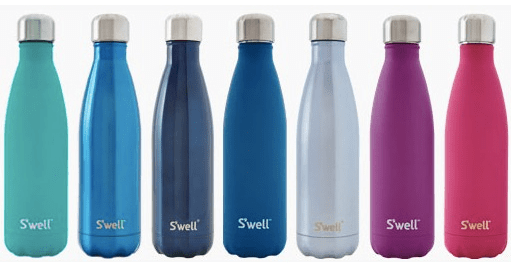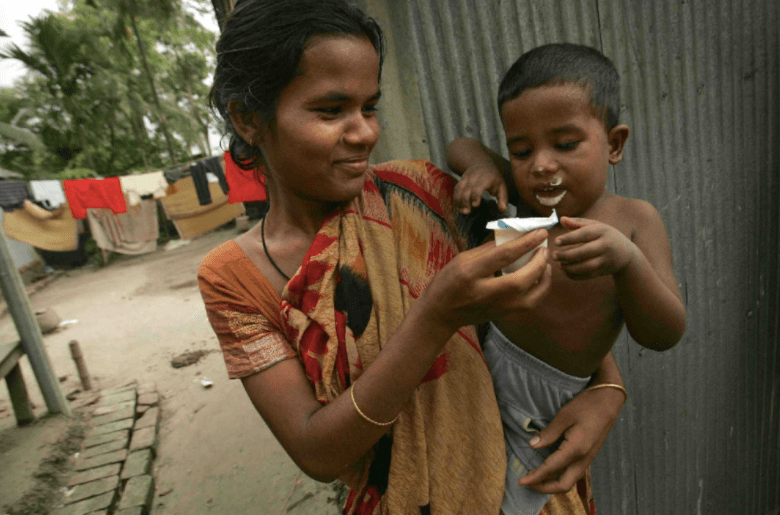BMC Part Eighteen: Where Does Impact Fit?
Image: LuminAID
(If you’re using the Canvas, you’ll love my free Business Modelling eBook, full of tips for inventing and testing ideas that will change the world)
Some people believe that the canvas needs extra boxes for social impact.
I am not one of those people.
That’s because I often see social entrepreneurs create some sub-par Value Propositions, and compensate by talking about all the good things that they will do for their beneficiaries.
The problem is, without a strong Value Proposition, customers won’t stick around long enough to fund the social impact, and the whole thing sadly implodes.
There are three ways in which your model can create impact – it comes back to our three lenses: Desirability, Feasibility and Viability.
Image: S'well
Desirability - our product/service itself creates positive social impact
This is a model where the sale of a product/service does something good for the world.
For example, it might be a re-useable bag or cup, which prevents plastic and paper from going into landfill.
It might be a nutritional food or fitness program – the more people who buy it, the healthier they become.
Maybe it’s something that generates awareness and changes minds – the act of distribution can build momentum for your cause
e.g. ten thousand people saw our film on mental illness or protecting oceans.
These are models where the aim of the game is throughput – the more we sell, the more impact we make.
We’re looking to create change within our customers, and by delighting them with a compelling Value Proposition, we can ensure that they’ll stay with us for years to come.
We should be able to describe our impact in the Customer Segments or Value Propositions boxes, as part of the benefits customers receive.
Image: Grameen Danone
Feasibility - our business operations create positive social impact
In the process of running an enterprise, we spend a lot of money on things like raw ingredients and payroll.
These forces can be channelled towards helping people or the planet, even if our customer never hears about it.
For example, you might be employing people with a disability, or asylum seekers, or who are homeless/long term unemployed.
By providing people with an accessible job, you create income, stability, dignity and meaning for a vulnerable group of people.
Groups like STREAT, Asylum Seekers Resource Centre and The Big Issue do this really well.
You also may use ethically sourced materials – like Fair Trade cocoa/coffee/rubber.
Maybe you stock another ethical company’s products, and you can choose to promote/support partners that align with your values.
These all fit in the Key Resources, Key Activities and Key Partners boxes.
Image: TOMS (via Instagram)
Viability - our finances create positive social impact
By generating a surplus/profit, an organisation can funnel money towards important work that may not have a natural revenue stream.
This allows an organisation to fund aid/advocacy projects and make donations thanks to their margins.
By setting appropriate (and high) price points, and by being vigilant in monitoring where our money is spent, an enterprise can build up a surplus and give it away.
Kinfolk Café does this well, enabling customers to vote for which causes should receive $50k+ each year.
Thankyou donate 100% of their profits to aid projects in the developing world, having given $5m to date.
This model relies on a profit.
If there is no extra money left over, there’s nothing to be donated.
As such, this model is often paired with one of the other impact methodologies.
This fits in the Cost Structure box, by listing “XX% of extra proceeds go towards…”
Image: Terracycle
Which one should we use?
People like to debate over which of these is the superior option, but I’m not interested in that argument.
For me, the more interesting question is: “Does this actually work?”
Are you good at your proposed impact model?
If it’s Desirability, your job is to become great at marketing and understanding your customer’s pain points.
If it’s Feasibility, your job is to design clever ways of substituting in people/resources that aren’t used by most large companies.
If it’s Viability, your job is to grow and defend your margins, to ensure there’s something left over at the end of the year.
Your canvas should reflect your intent.
Whatever change you want to create should be apparent in these nine boxes – no need to add in anything else.
It’s also worth exploring “What If?” regarding these models.
Just because you’ve always assumed one approach was the one for you, doesn’t mean it’s the only way forward.
In fact, the best enterprises I work with find ways of incorporating all three types of benefit.
Have a think about what modifications could be made to boost your impact.
Could a small tweak to your model double the amount of change you create?
Next we're exploring model improvements in Making It Great...
This is a multi-part series on the Business Model Canvas.
If you’d like to jump straight to a particular section, go to:
Overview: How To Use The Business Model Canvas
Desirability: Customer Segments, Value Proposition, Customer Relationships, Channels
Feasibility: Key Resources, Key Activities, Key Partners
Viability: Cost Structure, Revenue Streams
Then once you've made your first Canvas:
Reviewing: After Your First Model, Alarm Bells
Reinventing: Testing, What If?
Improving: Metrics, The Business Model Environment
Extensions: Pitching, Social Impact, Making It Great, What Next?












